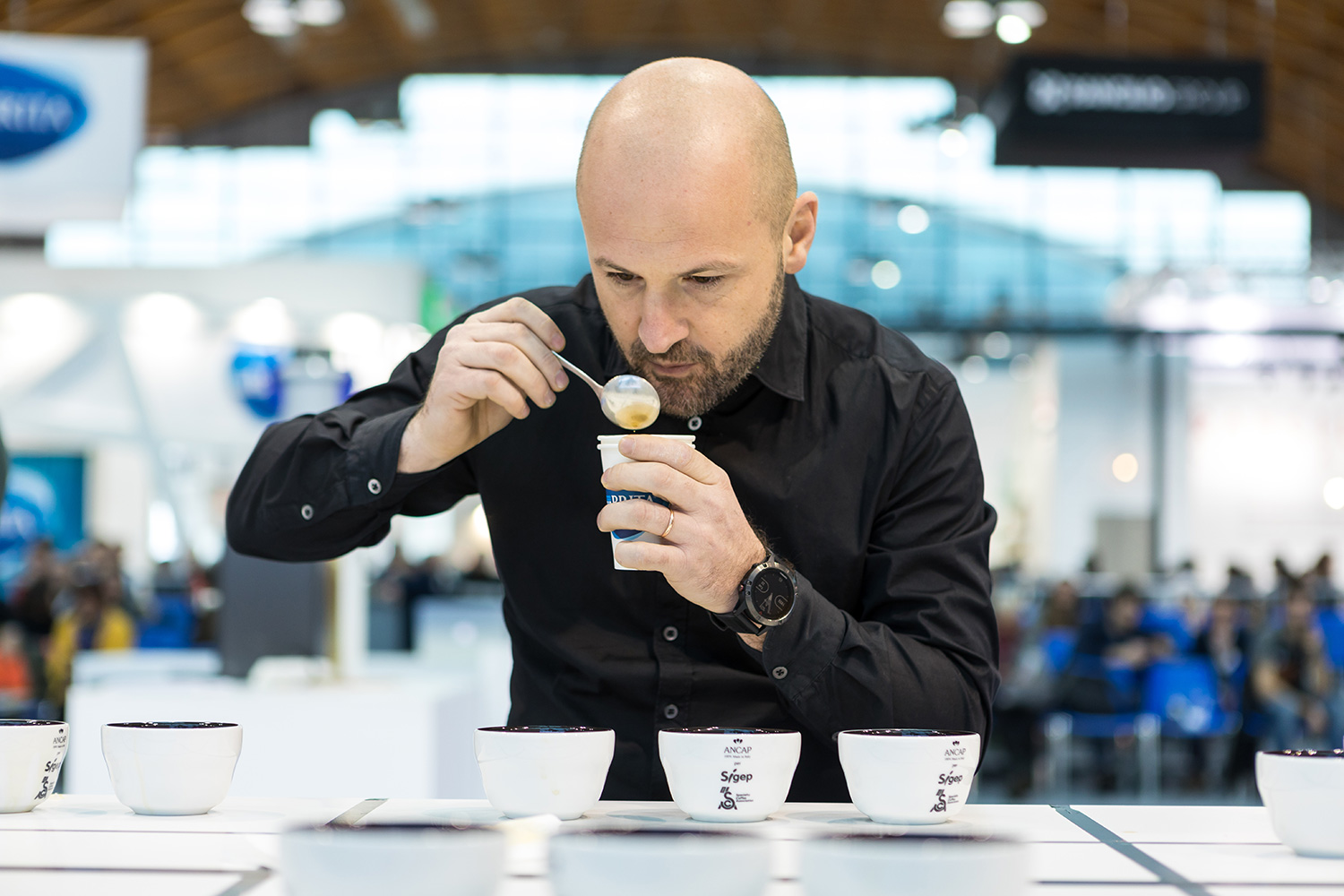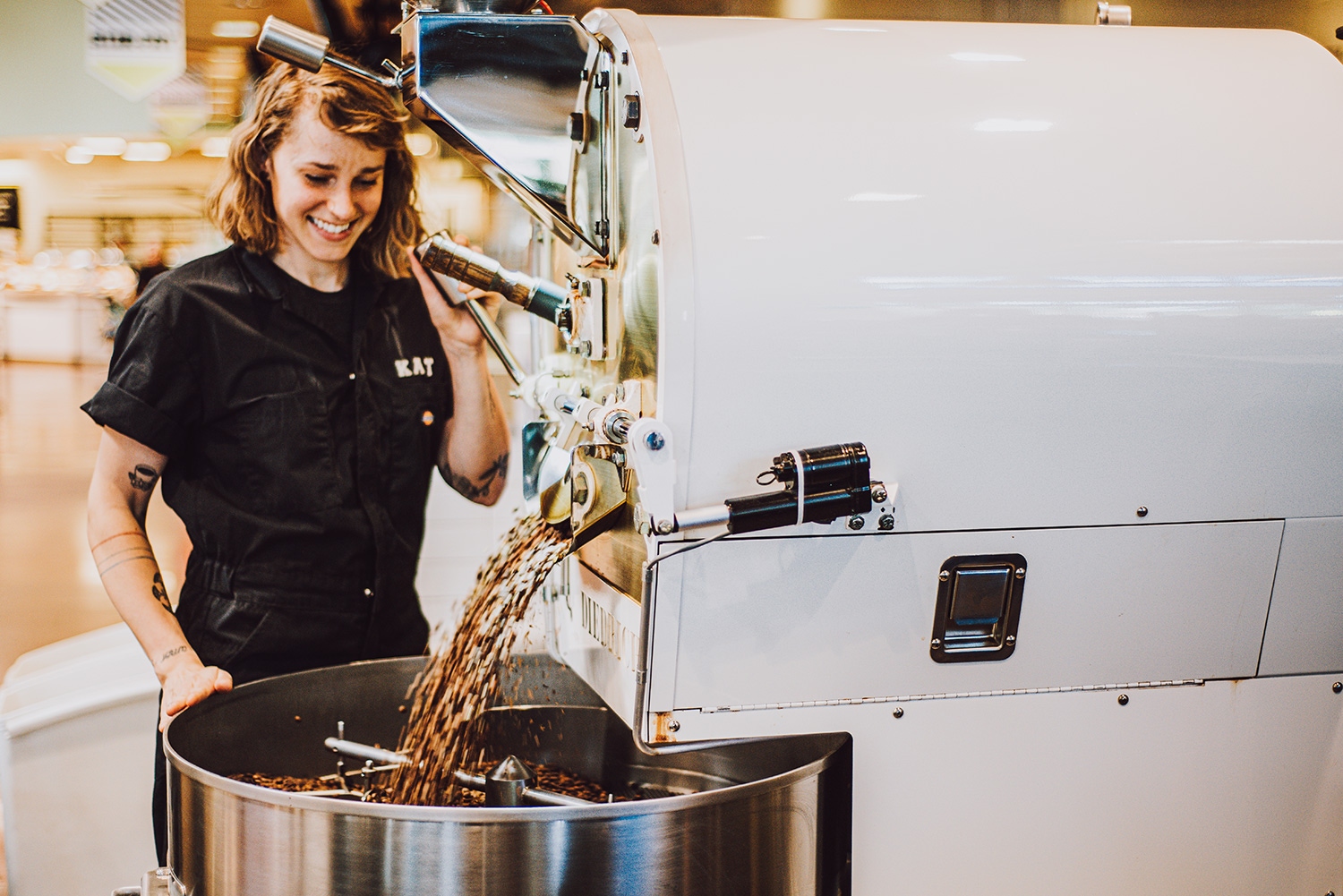
Kat is one of seven roasters for Allegro Coffee Roasters, the in-house roaster for the Whole Foods grocery store chain. Because Allegro is so massive, its packaging is designed and printed before Kat even touches the coffee. Which means Kat must roast each batch of coffee to match the coffee’s pre-established flavor notes.
Hence her chase for the elusive “Golden Raisin.” No matter how Kat adjusted the parameters of her roast profile, she could not find the flavor note in the coffee. She came close, managing to pull out the flavor of “dried fruit” in roasting the coffee. But never Golden Raisin. So Kat sought out assistance, calling the Allegro sensory team at the company headquarters, hoping for a hint for how to obtain the note of Golden Raisin.
Kat got an explanation, but maybe not the one she was expecting – the sensory team had tasted Golden Raisin in the pre-shipped samples of the coffee, but not in the larger batches. So she was told she shouldn’t worry too much about roasting for that specific flavor note. In other words, her quest for the Golden Raisin was about as hopeless as finding the pot of gold at the end of a rainbow.
Although Kat didn’t get the result she wanted with this coffee, her perseverance in pulling out the precise flavor note highlights an important point: that although a given coffee might have a predetermined amount of potential, roasters have the ability to enhance a coffee’s overall quality and flavor.
“There are intrinsic qualities in each bean, and I believe my job as a roaster is to bring those characteristics out,” Kat said. “You can’t make a coffee taste better than it’s going to taste. But as a roaster, it’s my job to let the positive characteristics shine.”
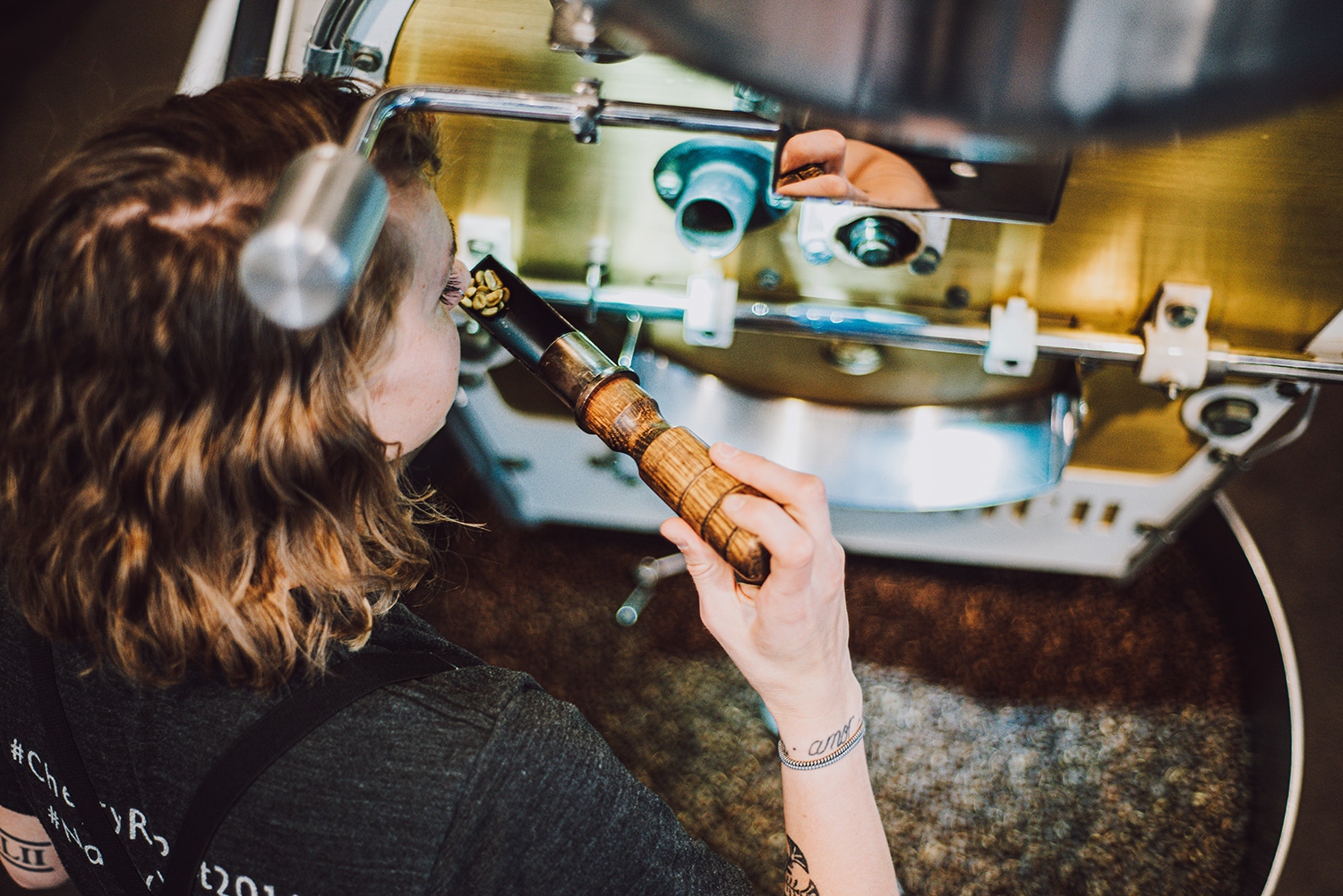
Kat has wielded these two controls to develop a full lineup of roast profiles for Allegro. Since she began working there in November 2018, she has created profiles for all 14 coffees of Allegro’s staple offerings as well as other seasonal batches. After each roast, Kat will send a sample of the coffee to her sensory team to ensure the coffee tastes great, matches the flavor notes on the packaging, and is aligned with the coffee from the other roasters on the Allegro team.
In order to keep her batches as consistent as possible, Kat is particularly diligent about keeping an eye on the airflow of the Diedrich roaster at Allegro. Specifically, she looks out for coffee residue that can bake onto the interior parts of the machine and restrict its airflow. If airflow is limited, the gas and particles that emit from the coffee can’t exit the machine, which gives the roasted coffee a dirty taste. And if the residue is left untouched, more residue more easily accumulates on dirty parts of the roaster.
To combat this issue, Kat has used the new Urnex Roaster Sprayz to dislodge and remove this hardened residue from the roaster. She has used Roaster Sprayz to eliminate the built-up gunk in the chamber and tubing beneath the drum of the roaster, which would have otherwise blocked the airflow of the machine.
“Roaster Sprayz is better than anything I’ve ever used before to clean a roaster,” Kat said. “It works better, faster, and is less work for me to get the same result. It strips everything off the inside of the machine, so grunge doesn’t have a place to grip onto. So it takes even longer for the machine to get dirty again because it’s so clean in the first place.”
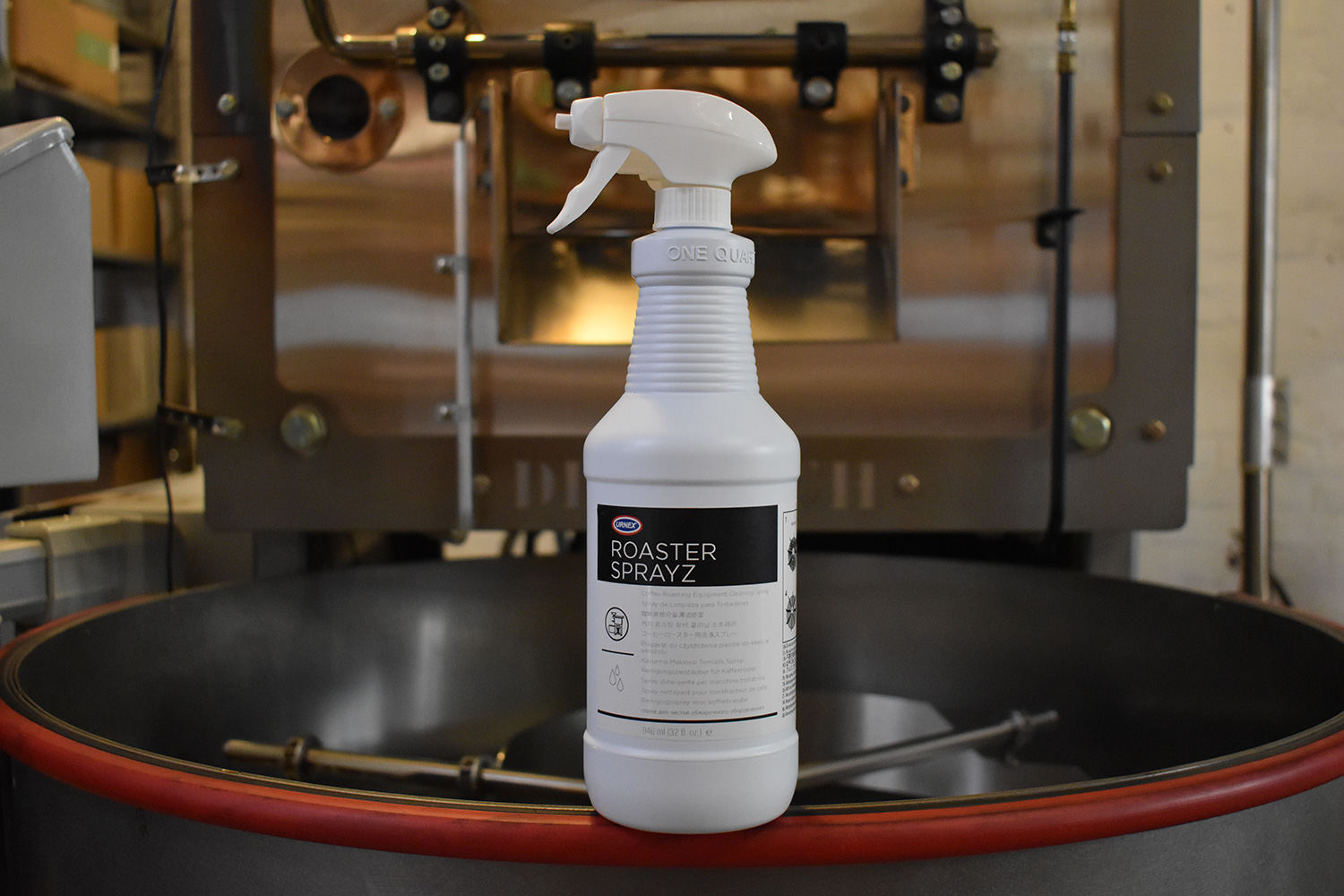
The various techniques at a roaster’s disposal all depend the physical characteristics of the coffee, such as density and moisture content. While that information might not always be available to the roaster, coffees from similar regions or processing methods can behave similarly in the roasting process.
Urnex Ambassador Wojtek Bialczak has used this concept to his advantage as the Head Roaster at the renowned Five Elephant roastery in Berlin. Viewing the roasting process as how much “energy” is applied to the beans, Wojtek can make assumptions with a coffee based on its origin and processing method to enhance it in roasting. For instance:
- African coffees require more energy more quickly than other coffees: otherwise, they will be underdeveloped.
- For naturally processed coffees, don’t add too much energy at the beginning of the roast to keep the beans from becoming burnt.
- Washed coffees and more acidic coffees can be hit with more heat because they’ll build up a nice body and sweetness.
- Kenyans are the easiest origin to roast, according to Wojtek. With more energy, they’ll become thick and sweet. With a slower and gentler roast, the coffee will embody more floral notes.
While these assumptions make for easy rules of thumb, every coffee is different. It can take several roasts, cuppings, and adjustments to find the right balance and to fine-tune the roast profile.
Wojtek said each roast at Five Elephant is like a test roast, because he is trying to make each batch better than the last.
“A roast is never perfect the first time,” Wojtek said. “And it shouldn’t be, because there is always a better way of roasting and we should always try to find it. So when people ask if we are consistent, the answer is ‘no’ because we change our roasts a lot. We want to get better at roasting, and we want our customers to get better coffee.”
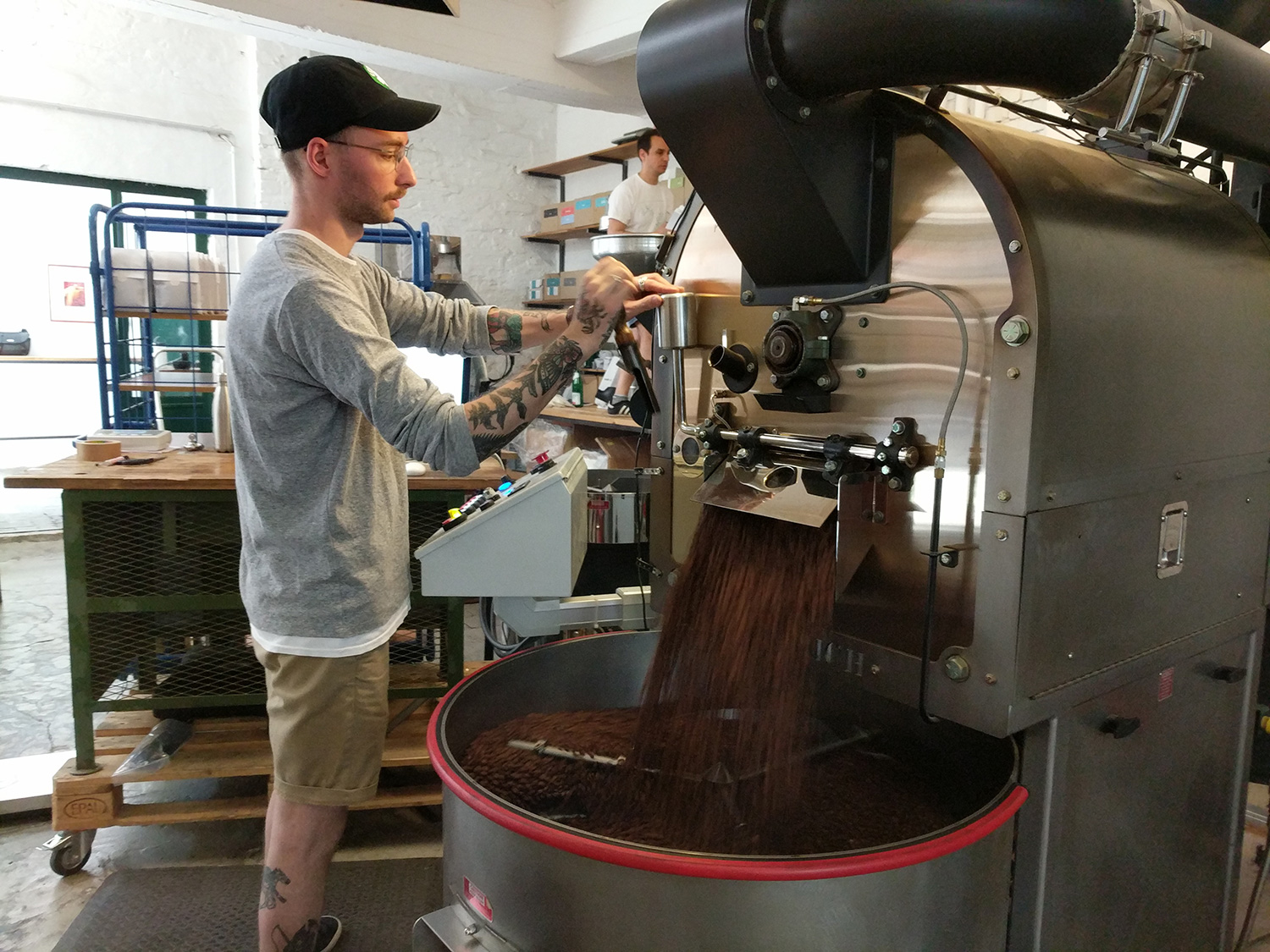
But it’s this exact thinking that slows a roaster’s own development curve. Wojtek thinks the best coffee roasters are the ones that roast lower quality coffees – they are forced to use new and creative roasting techniques to hide a coffee’s negative tastes while highlighting the coffee’s positive attributes. Roasters that only handle specialty coffee aren’t in an environment where they can freely experiment without more severe consequences.
Which is why maybe coffee roasting competitions should consider a simple but radical rule: only Robustas allowed.
For more on advancing your coffee skills, learn How to Develop Your Coffee Palate.

